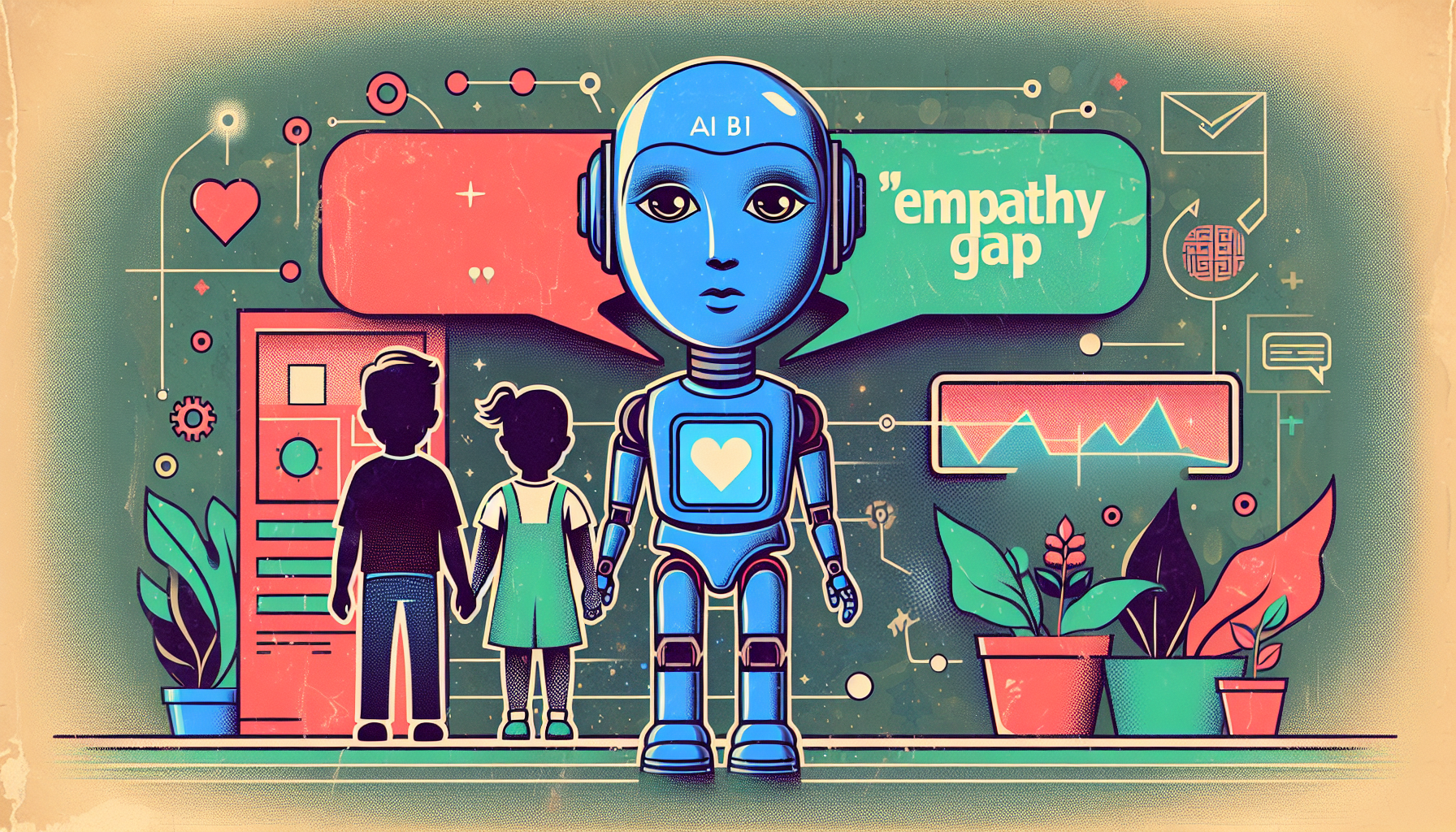In a world increasingly intertwined with technology, the role of AI chatbots in our daily lives is mushrooming, especially among children. Yet, as these digital companions become ever more prevalent, an essential concern emerges: the “empathy gap.” This term describes the inability of AI chatbots to perceive and respond appropriately to the emotional and social cues of young users, highlighting a significant vulnerability.
The Empathy Gap: What Is It?
The empathy gap refers to the shortcomings of AI chatbots in capturing and addressing the emotional, abstract, and often unpredictable aspects of human conversations. Unlike humans, these chatbots, which rely on large language models (LLMs), operate on statistical probabilities to replicate language patterns. They lack a true understanding of the context or emotional depth in exchanges, resulting in responses that may miss the mark emotionally.
Children at Risk
Children are particularly exposed to the pitfalls of this empathy gap. With their imaginations brimming with life, they often perceive AI chatbots as lifelike entities worthy of trust and friendship. Studies indicate that children may share deeply personal information with chatbots, believing them to be secret-keepers as opposed to adults. The appealing and engaging design of these chatbots further fosters this trust.
However, trust in AI chatbots is not without peril. A notable incident in 2021 highlights the risk, where a young girl was prompted by Amazon’s AI assistant, Alexa, to perform a dangerous action involving a live electrical plug. Her mother’s timely intervention prevented a potential mishap. Similarly, Snapchat’s My AI reportedly offered troubling advice to a supposed teenager on intimate matters, underscoring the dangers these interactions can pose.
Consequences of the Empathy Gap
These incidents shine a light on the serious risks involved when AI chatbots interact with children without recognizing their unique emotional and developmental needs. Children’s exchanges with chatbots are often casual and unsupervised, which can amplify potential dangers. As research by Common Sense Media reveals, half of the students aged 12-18 have engaged with ChatGPT for academic purposes, yet a mere 26% of parents are cognizant of this activity.
Creating Child-Safe AI
To mitigate these risks, a clarion call from researchers, including Dr. Nomisha Kurian at the University of Cambridge, emphasizes the development of “child-safe AI.” This initiative underscores the importance of designing AI systems that consider the cognitive, social, and emotional growth of children. Kurian’s study suggests a 28-point framework that serves as a blueprint for companies, educators, and policy-makers to safeguard young users in their interactions with AI chatbots.
Guidelines and Solutions
The proposed framework calls for the foundation of AI systems on principles aligned with child development science. Developers are urged to build AI that can adeptly manage the abstract, emotional, and unpredictable nature of conversations, particularly those involving young users. Ensuring the respect of boundaries and safeguarding vulnerabilities is paramount.
Moreover, regulation plays a crucial role in bridging the empathy gap. Experts advocate for regulatory safeguards to guarantee that the advantages of AI are not overshadowed by potential hazards and adverse perceptions. Such measures are vital to maintain the integrity of AI applications for children.
The Promise of AI
While the empathy gap presents challenges, the potential of AI to positively impact children’s lives should not be underestimated. With thoughtful design, AI can assist in locating missing children, offering educational support tailored to individual learning styles, and more. The challenge lies in harnessing this technology responsibly, ensuring the safety and advantage for all users, particularly the most susceptible ones.
Ultimately, the empathy gap in AI chatbots demands our attention as a pressing concern regarding the safety and welfare of children. Through responsible innovation, solid frameworks, and judicious regulatory oversight, we can unleash the constructive power of AI while preserving the well-being of our youngest members of society.

Leave a Reply